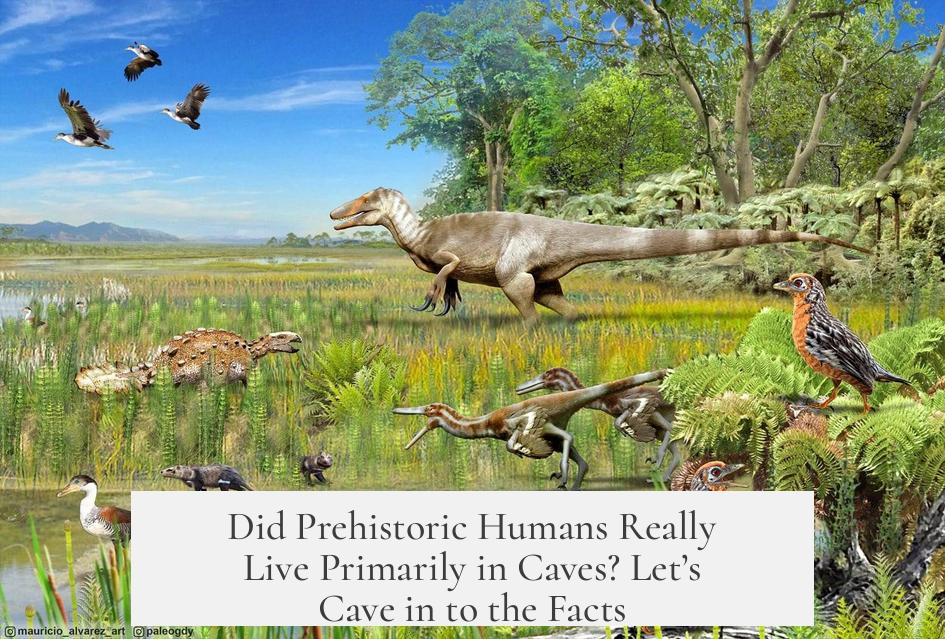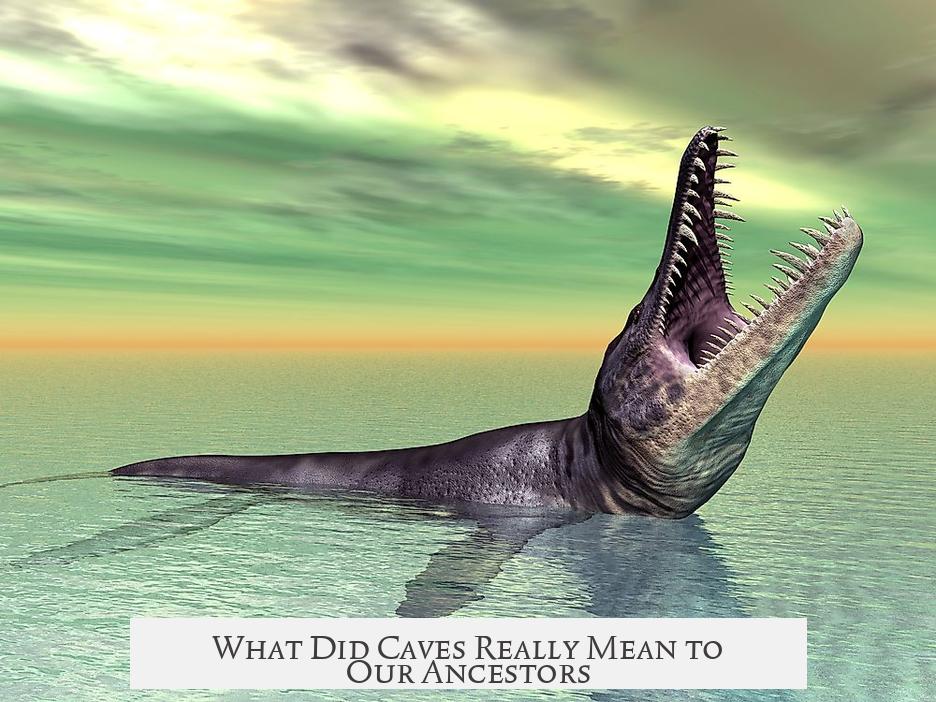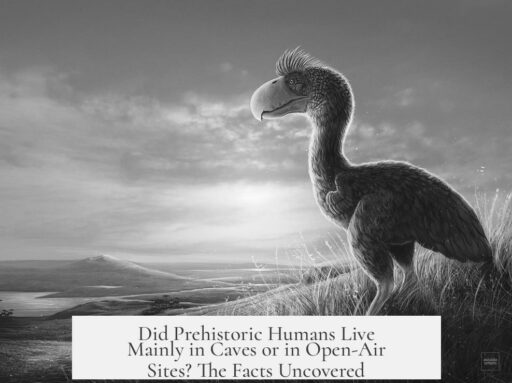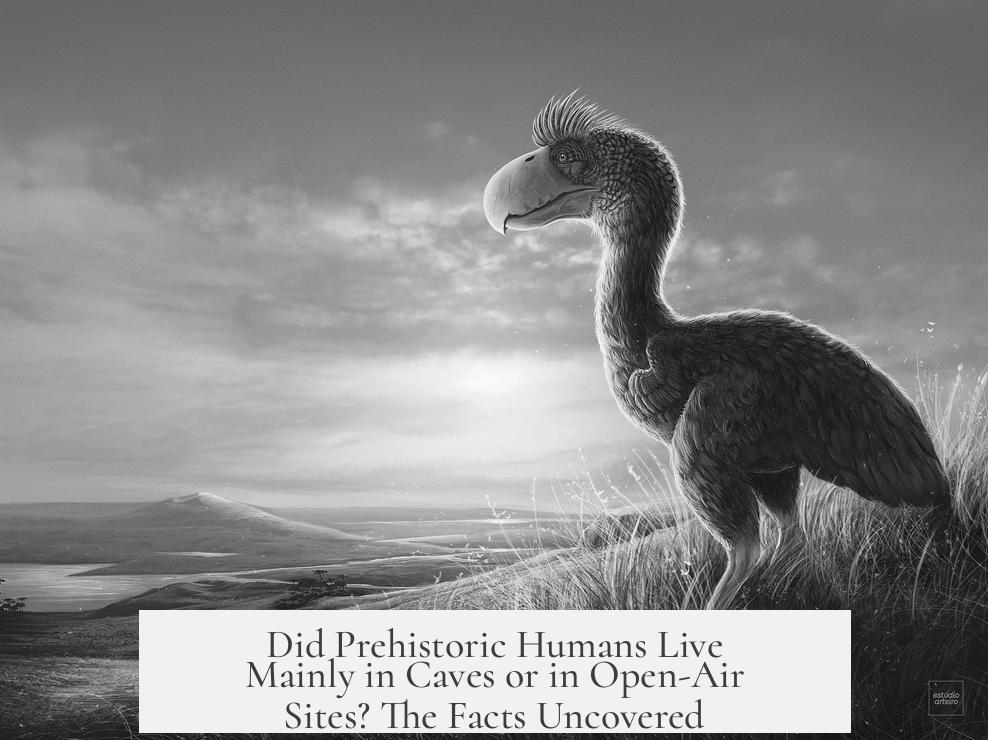Prehistoric humans did not primarily live in caves; instead, caves served as specialized, short-term shelters, while most habitation occurred in open-air settings near vital resources.
Archaeological evidence shows that the majority of prehistoric sites are open-air, located strategically near food, water, and raw materials. Humans favored these areas for long-term living because they offered easier access to essential resources. Caves and rockshelters were rarely used as permanent homes.
Research indicates cave use was often temporary and task-specific. Early humans used caves for activities such as food storage, tool making, or as hunting camps. These sites provide only a narrow glimpse into prehistoric life. In contrast, open-air sites reflect broader, everyday living environments, though they mostly preserve stone tools due to exposure and poor organic material survival.
One reason caves receive disproportionate attention lies in preservation bias. The stable, dry environments within caves protect organic remains like wood, bone, and textiles. These rare, well-preserved artifacts attract archaeologists and the public alike. This focus can create a false impression that caves were typical dwellings, overshadowing the more common but less preserved open-air sites.
Open-air sites, especially in deserts, often lose organic artifacts to weathering, leaving mainly lithic tools. Their surface exposure limits the diversity of finds. Conversely, caves yield richer material culture, yet their use was situational rather than habitual.
Living near resources was the priority for prehistoric humans. Caves provided shelter from weather and secure cache locations but were seldom near water and abundant food sources. Thus, cave dwelling was a part of a varied settlement strategy, not the dominant pattern.
- Prehistoric humans mostly lived in open-air sites close to essential resources.
- Caves served specialized, short-term functions like storage and hunting camps.
- Preservation bias makes cave artifacts more common and striking than open-air remains.
- Open-air sites often lack organic preservation but represent longer-term habitation.
- The idea that early humans lived mainly in caves stems from the rarity and visibility of cave finds.
Did Prehistoric Humans Really Live Primarily in Caves? Let’s Cave in to the Facts

So, did prehistoric humans spend most of their time living in caves or is that just a clever illusion fueled by archaeologists’ love for well-preserved digs? The short answer is a firm no. Early humans and their extinct hominoid cousins didn’t actually make caves their primary homes. That’s right—your mental image of brooding cavemen huddling in shadowy grottoes most of the time? Outdated and overhyped.
But before you toss your torch and stone tools, let’s unravel why the cave narrative is so sticky and what the archaeological evidence really says.
Open-Air Sites: The Real Neighborhoods of Prehistoric Humans
Contrary to popular belief, most archaeological sites where early humans lived have been found in open-air environments—not inside caves. This discovery flips the cozy-cave theory on its head.
Open-air sites tend to be located close to vital resources—think water sources, hunting grounds, and gathering spots. These locations offered better access to what mattered most for survival: food and fresh water. After all, who wants to lug dinner miles back to a cave every day?
These open-air sites form the vast majority of known pre-contact locations. They mostly consist of stone tools. The reason? Their preservation conditions don’t favor organic remains like bones or textiles, which degrade quickly in sun-exposed desert settings.
The Cave Factor: Why Caves Are Archaeologically “Sexy”
While prehistoric humans didn’t live primarily in caves, caves themselves have a knack for preserving artifacts, providing a fascinating peek into the past.
Caves and rockshelters offer a perfect dry environment that conserves organic materials—things like wood, bones, textiles, and other perishable items. These uncommon finds are a jackpot for archaeologists and history buffs alike because of their rarity and research value.
“Cave sites are like the VIP lounges of archaeology—they attract much more attention simply because they hold rare, well-preserved treasures.”
This disproportionate attention gives caves an outsized role in the public imagination. Because cave finds are shared widely by academics and the media, people tend to assume early humans camped there all the time. In reality, this focus is a form of preservation bias.
What Did Caves Really Mean to Our Ancestors?

Think of caves as the ultimate pop-up shops of the Stone Age—specialized, temporary spots rather than permanent residences. Research suggests prehistoric cave use was mostly short-term and practical.
- Caves functioned as hunting camps, temporary shelters during harsh weather, or places to process food and store resources.
- The evidence suggests little indication that caves served as long-term residential camps for prehistoric groups in many regions.
This glimpse into niche uses challenges the romanticized idea of full-time cave-dwellers. Early humans moved around according to the resources available, adapting to seasons and environments rather than hunkering down in caves day and night.
Open-Air Sites: The Challenges of Archaeological Visibility
Sure, open-air sites dominate prehistoric settlement patterns, but they come with their own set of archaeological challenges—especially in dry, desert-like areas.
Exposure to the elements means organic artifacts rarely survive. Without bones or textiles, much of these sites’ stories are reduced to stone tools scattered across the landscape.
This scarcity of ‘flashy’ artifacts results in less scientific and public attention compared to cave sites. Hence, some may wrongly conclude caves were the main habitats simply because they yield richer, more diverse archaeological collections.
Why Did the “Cave Dwelling” Myth Take Hold?
Humans love a good story. Cave paintings, mysterious underground chambers, and the dramatic flair of a cave setting tick all the storytelling boxes.
The preservation of incredible artifacts in caves fuels this narrative, yet it overlooks the day-to-day realities. Prehistoric humans were smart—they lived near food, water, and other essential resources, often far from caves.
For example, practical considerations—like hunting grounds, fresh water, and favorable conditions for gathering—would naturally draw groups to open landscapes. Our ancestors didn’t prioritize gloomy caves over abundant resources.
Wrapping It Up: What Really Mattered for Where Prehistoric Humans Lived
So, do caves hold the key to understanding prehistoric life? Yes, but only in a specialized context. They were important for task-specific uses and as excellent preservation environments—but not primary homes.
Main takeaway: Prehistoric humans were dynamic and adaptive. They lived mostly in open-air settings close to resources, using caves and rockshelters for short-term purposes. The cave-dwelling image is mostly a preservation bias and a media-friendly myth.
Next time you think of early humans, picture them roaming open landscapes, savvy in resource-gathering and moving strategically—not permanently camped in shadowy caves. This view gives us a richer, more realistic understanding of how our ancestors lived.
Got any prehistoric myths you’d like busted? Or want to delve deeper into human origins and archaeology? Drop your questions or thoughts below and let’s keep the conversation alive!




